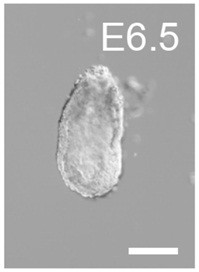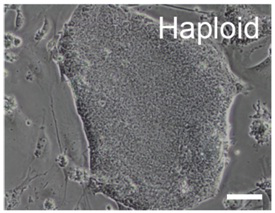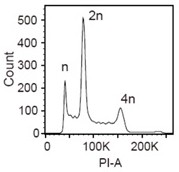Method for obtaining mouse haploid stem cells
A technology of stem cells and haploids, applied in the biological field
- Summary
- Abstract
- Description
- Claims
- Application Information
AI Technical Summary
Problems solved by technology
Method used
Image
Examples
Embodiment Construction
[0025] In this study, we microinjected p53-knockout (p53-KO) mouse haESCs into wild-type mouse blastocysts, and transplanted the reconstituted embryos back into 0.5-day-old pseudopregnant mother mice In the oviduct of the embryo, the dissection was performed when the embryo developed to E6.5 days ( figure 1 ), isolate the Epiblast (epiblast) region and plant it in the culture medium, and finally form the standard mouse epiblast stem cells ( figure 2 ). Using the wild-type diploid mouse epiblast stem cell line as a control, we expanded and sorted the established haEpiSCs line by flow cytometry (FACS) ( image 3 ).
[0026] Material method:
[0027] 1. Obtaining of reconstructed embryos:
[0028] 1) Perform superovulation treatment on CD1-background female mice (48 hours after intraperitoneal injection of PMSG hormone, intraperitoneal injection of hCG hormone again), and then put superovulated female mice and male mice into cages, and leave the cages for later. The dams we...
PUM
 Login to View More
Login to View More Abstract
Description
Claims
Application Information
 Login to View More
Login to View More - R&D Engineer
- R&D Manager
- IP Professional
- Industry Leading Data Capabilities
- Powerful AI technology
- Patent DNA Extraction
Browse by: Latest US Patents, China's latest patents, Technical Efficacy Thesaurus, Application Domain, Technology Topic, Popular Technical Reports.
© 2024 PatSnap. All rights reserved.Legal|Privacy policy|Modern Slavery Act Transparency Statement|Sitemap|About US| Contact US: help@patsnap.com










